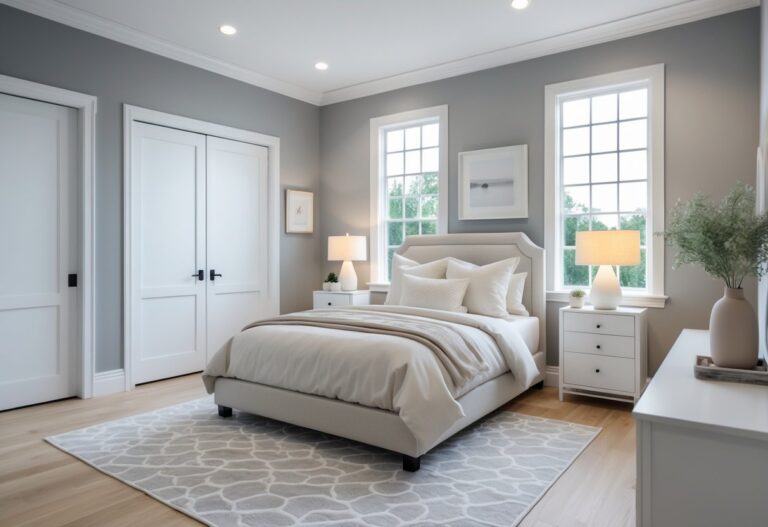
10 Room Color Ideas Bedroom to Transform Your Space with Style and Comfort
Choosing the right color for a bedroom can greatly influence the room’s mood and overall feel. Colors have the power to create a cozy, calm, or vibrant atmosphere depending on the shades used. It is important to select colors that match the desired ambiance and personal style.
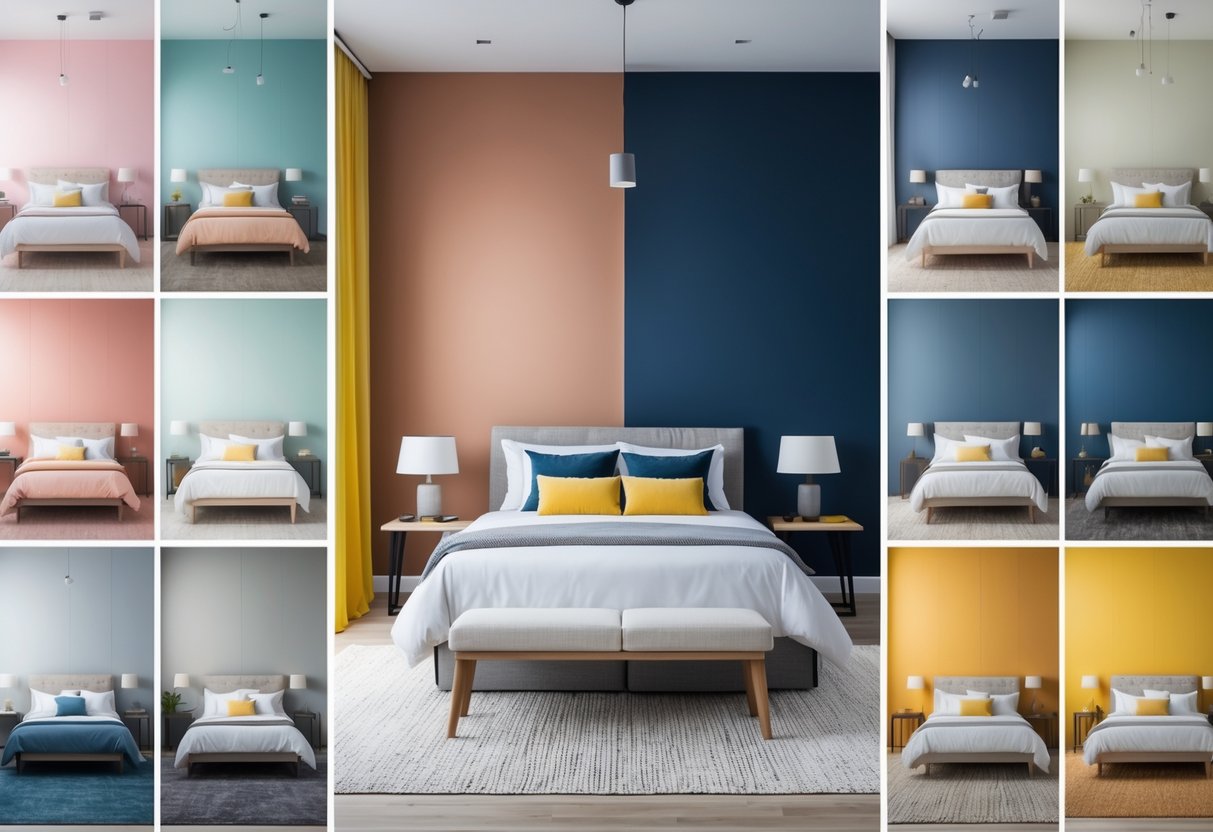
This article offers 10 practical bedroom color ideas to help create a space that feels comfortable and inviting. Each idea is designed to inspire and guide those looking to refresh their bedroom’s look with colors that work well for rest and relaxation.
1) Soft Gray with White Trim
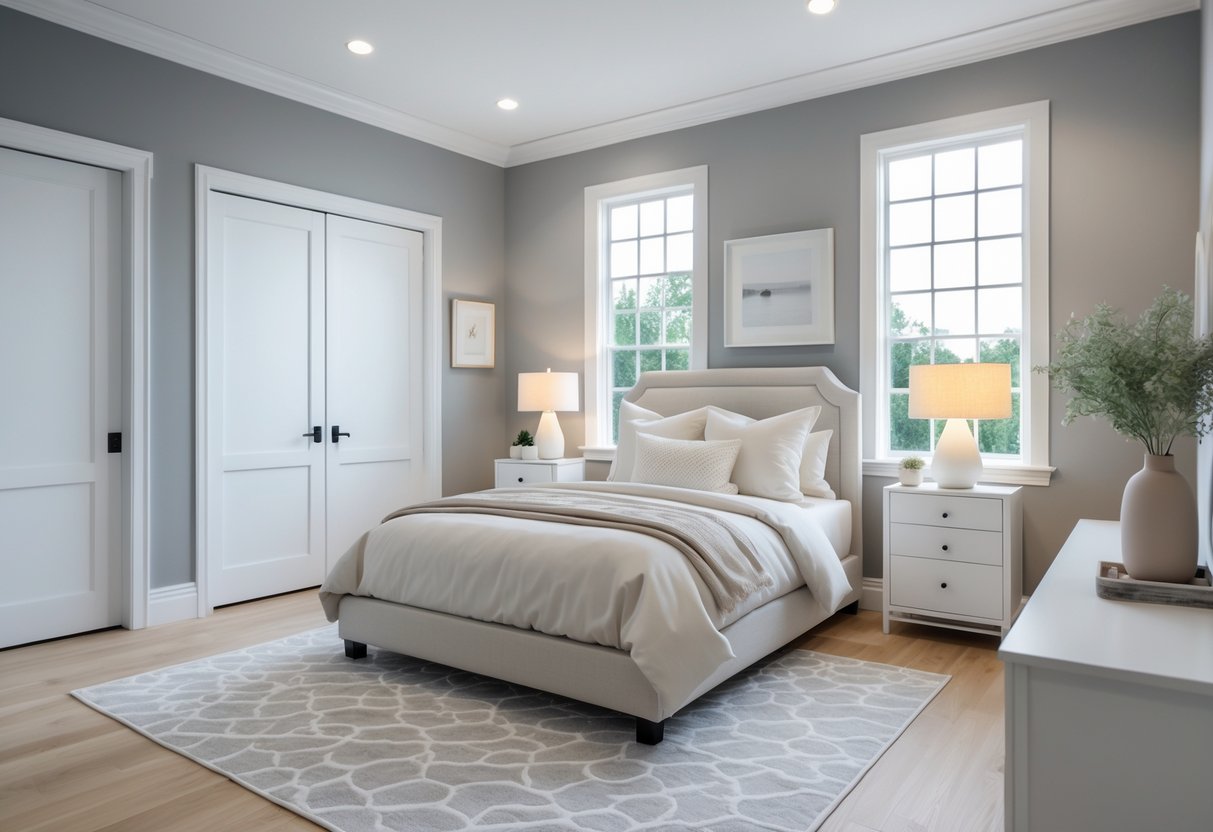
Soft gray walls create a calm and neutral backdrop for any bedroom. This shade is neither too dark nor too light, making the room feel spacious and warm.
White trim adds a sharp, clean contrast. It highlights windows and doors, giving the room a balanced, classic look. This color pairing works well with many decor styles.
2) Deep Navy Blue Accent Wall
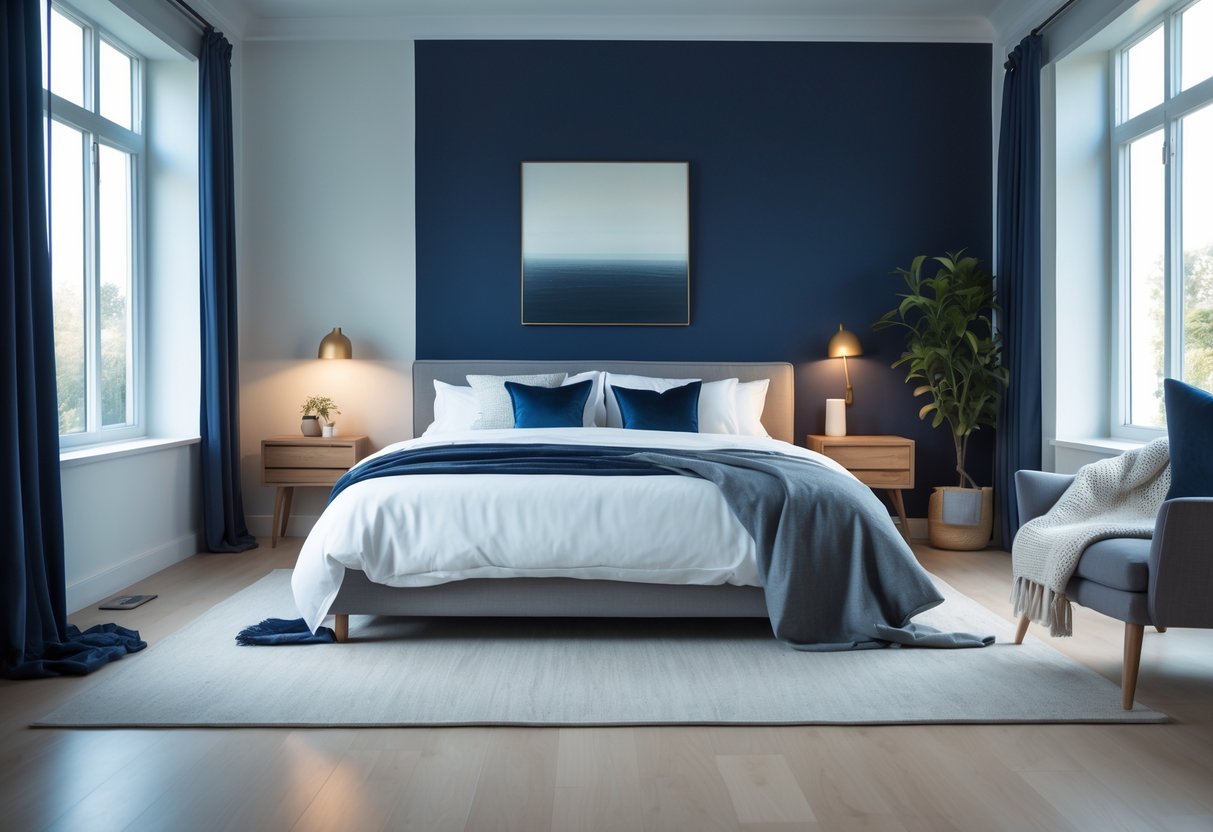
A deep navy blue accent wall adds rich color and depth to a bedroom. It creates a strong focal point without overwhelming the space. This shade pairs well with light neutrals like beige or white to balance its intensity. Navy blue also brings a sense of calm and sophistication to the room.
3) Warm Taupe with Cream Accents
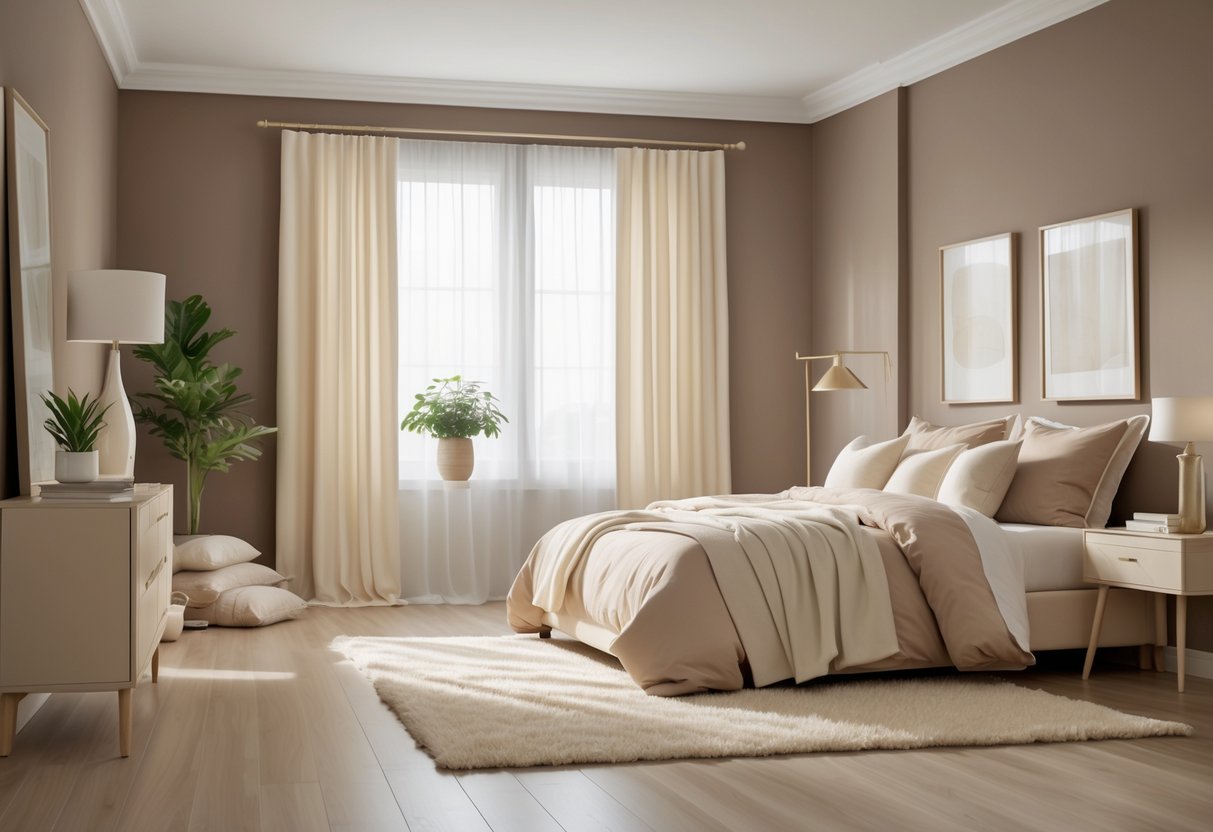
Warm taupe creates a cozy and inviting base for the bedroom. Cream accents soften the look, adding light and balance.
Using different textures like soft rugs and cushions helps bring depth to the room. This mix gives a calm but elegant feel that suits many styles.
4) Muted Sage Green
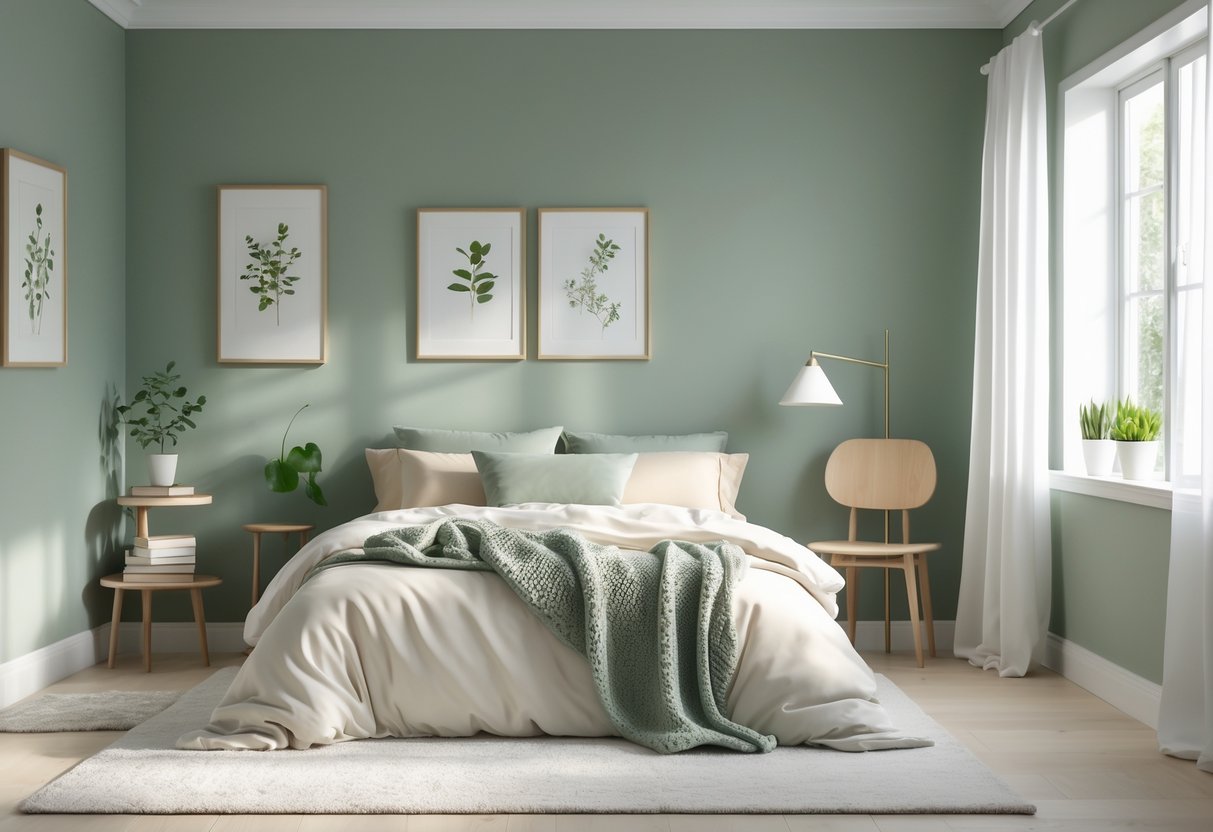
Muted sage green creates a calm and cozy atmosphere in the bedroom. It brings a touch of nature indoors with its soft, earthy tone. This color works well with natural materials like linen and wood, adding warmth without feeling bold or overwhelming. It suits both modern and rustic styles.
5) Powder Blue for a Calm Vibe
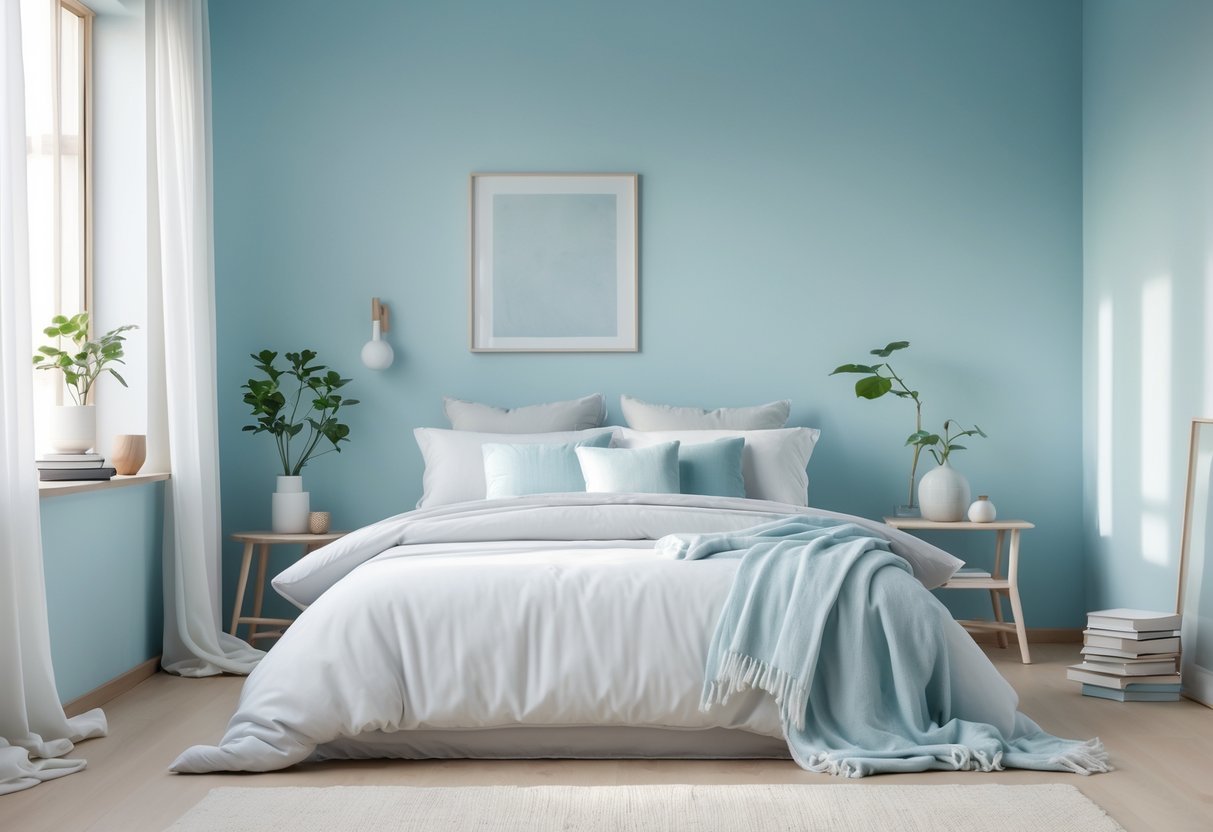
Powder blue is a soft, light shade that creates a peaceful feeling in the bedroom. It works well on walls, offering a clean and calming backdrop.
This color pairs nicely with light wood furniture and white bedding to keep the room feeling open and fresh. It helps make the space feel restful without being dull or cold.
6) Blush Pink and Gold Touches
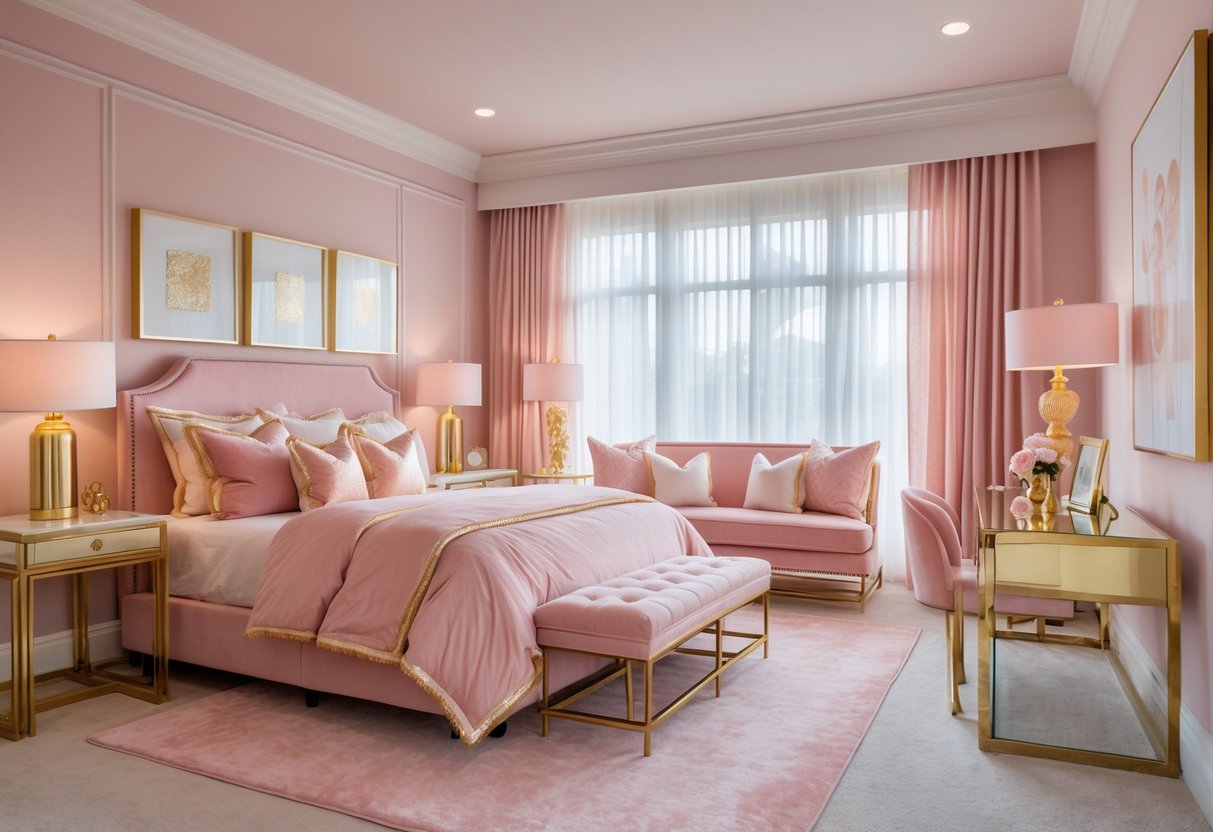
Blush pink walls create a soft and calming atmosphere in a bedroom. Gold accents, like mirrors or lamps, add a subtle touch of elegance.
This color combination balances warmth with sophistication. It works well for those who want a cozy space with a refined look.
7) Charcoal Gray for Modern Elegance
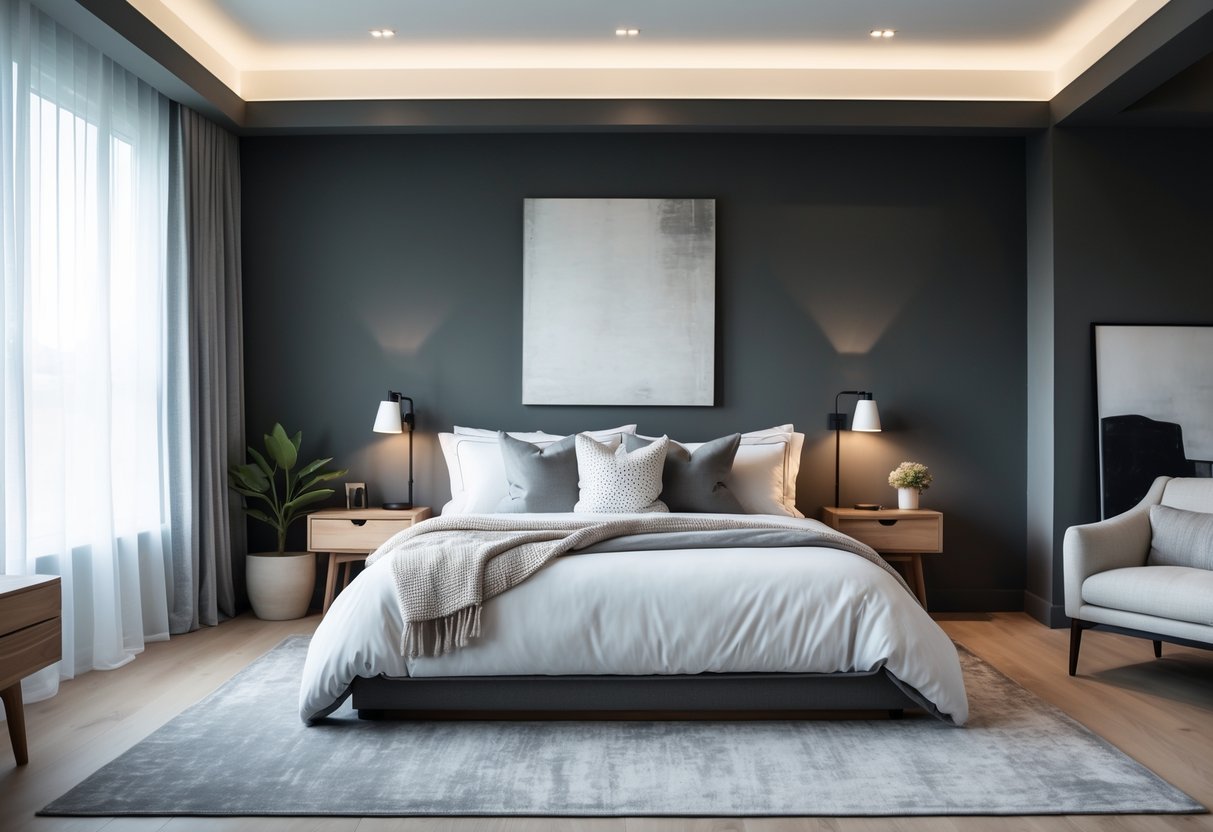
Charcoal gray creates a calm and stylish bedroom atmosphere. It works well as a strong wall color that makes lighter furniture stand out.
This shade suits minimalist designs because it highlights clean lines and keeps the space uncluttered. It can blend with wood tones or simple accents to add warmth and comfort.
8) Classic Beige with Wooden Elements
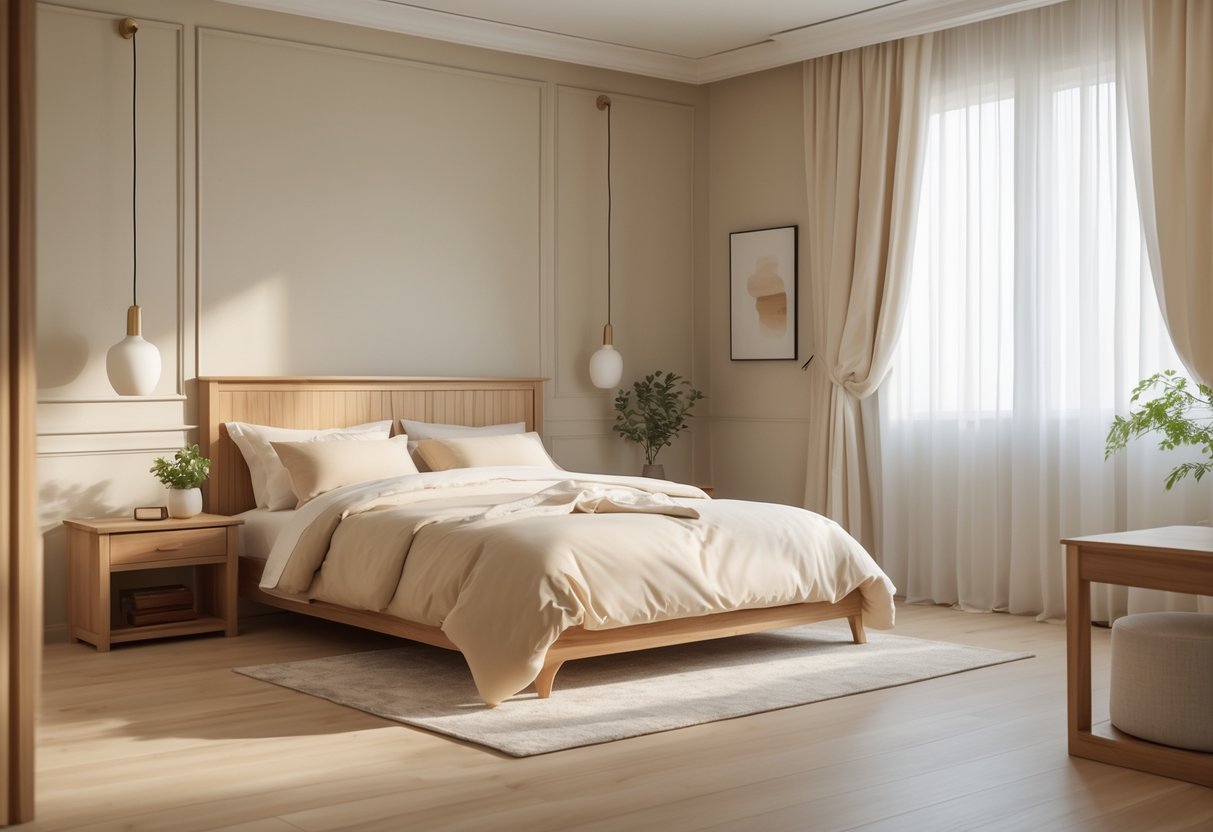
Beige walls create a soft and warm backdrop. Adding wooden furniture or accents brings natural texture and depth.
The mix of beige and wood produces a cozy and timeless feel. It works well in both modern and rustic bedrooms.
Natural textiles, like linen or cotton, can enhance the look by adding simple layers without overwhelming the space.
9) Rich Burgundy Statement Wall
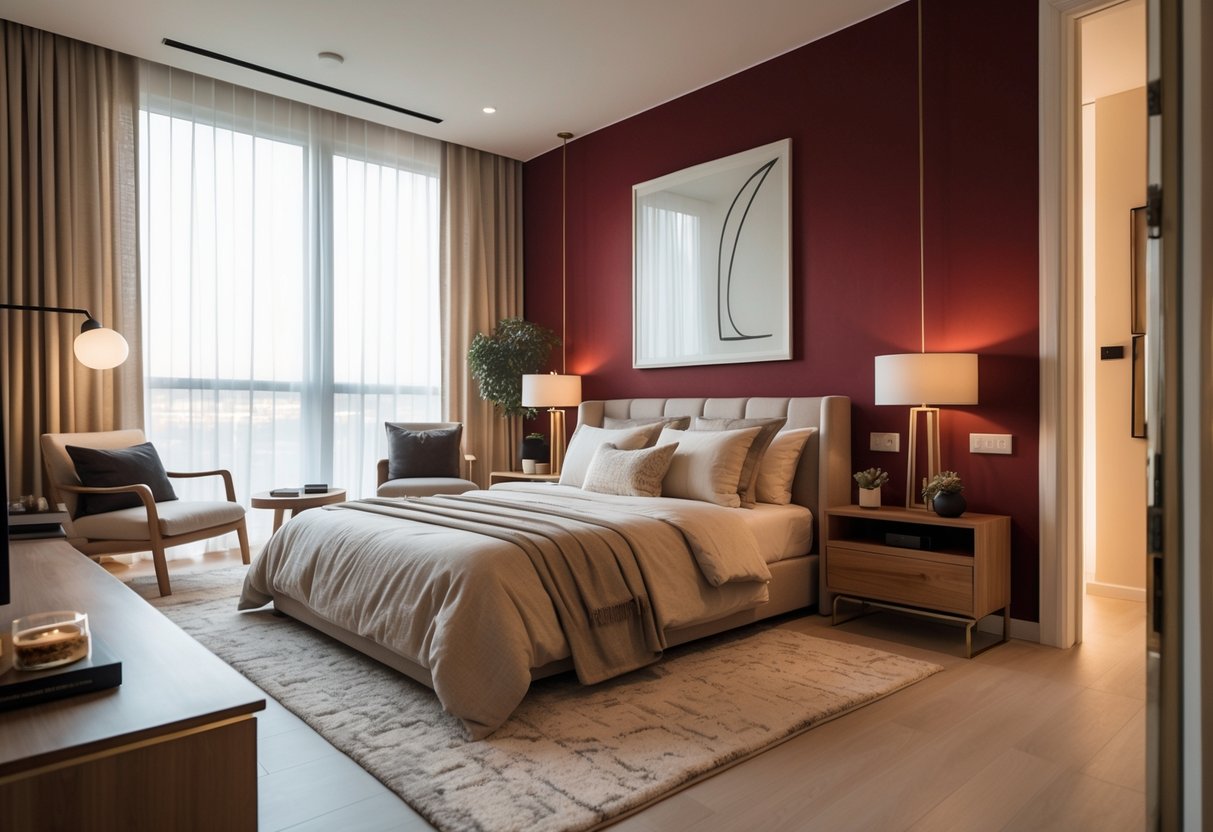
A rich burgundy wall adds warmth and depth to a bedroom. It creates a strong focal point without overwhelming the space.
This color works well with neutral furniture and light accents. It can make the room feel cozy and elegant at the same time.
Using burgundy on one wall keeps the look balanced. It invites sophistication while allowing other colors to stand out.
10) Sunny Yellow for Energy
Sunny yellow adds energy and warmth to a bedroom. It can make the space feel bright and inviting without being overwhelming.
Using softer shades like buttery yellow with white accents helps keep the room balanced. Yellow works well on walls, bedding, or as accent pieces to bring in cheerfulness.
How Room Colors Influence Bedroom Mood
Room colors affect how people feel by changing energy and emotions in the space. Some colors create calm and relaxation, while others increase alertness or excitement. Choosing the right colors can help improve sleep quality and make the bedroom a restful place.
Color Psychology Basics
Color psychology studies how colors impact mood and behavior. In bedrooms, cool tones like blues and greens often promote calmness and help people relax. Warm colors such as reds and oranges can raise energy but may also cause restlessness if overused.
Neutral shades like grays and beiges provide balance. They create a soft, quiet background that supports relaxation without being too dull or too stimulating.
Some colors carry personal meaning too. For example, a favorite color might bring comfort, while others may trigger memories that affect mood. Knowing this helps select bedroom colors that support peaceful sleep and positive feelings.
